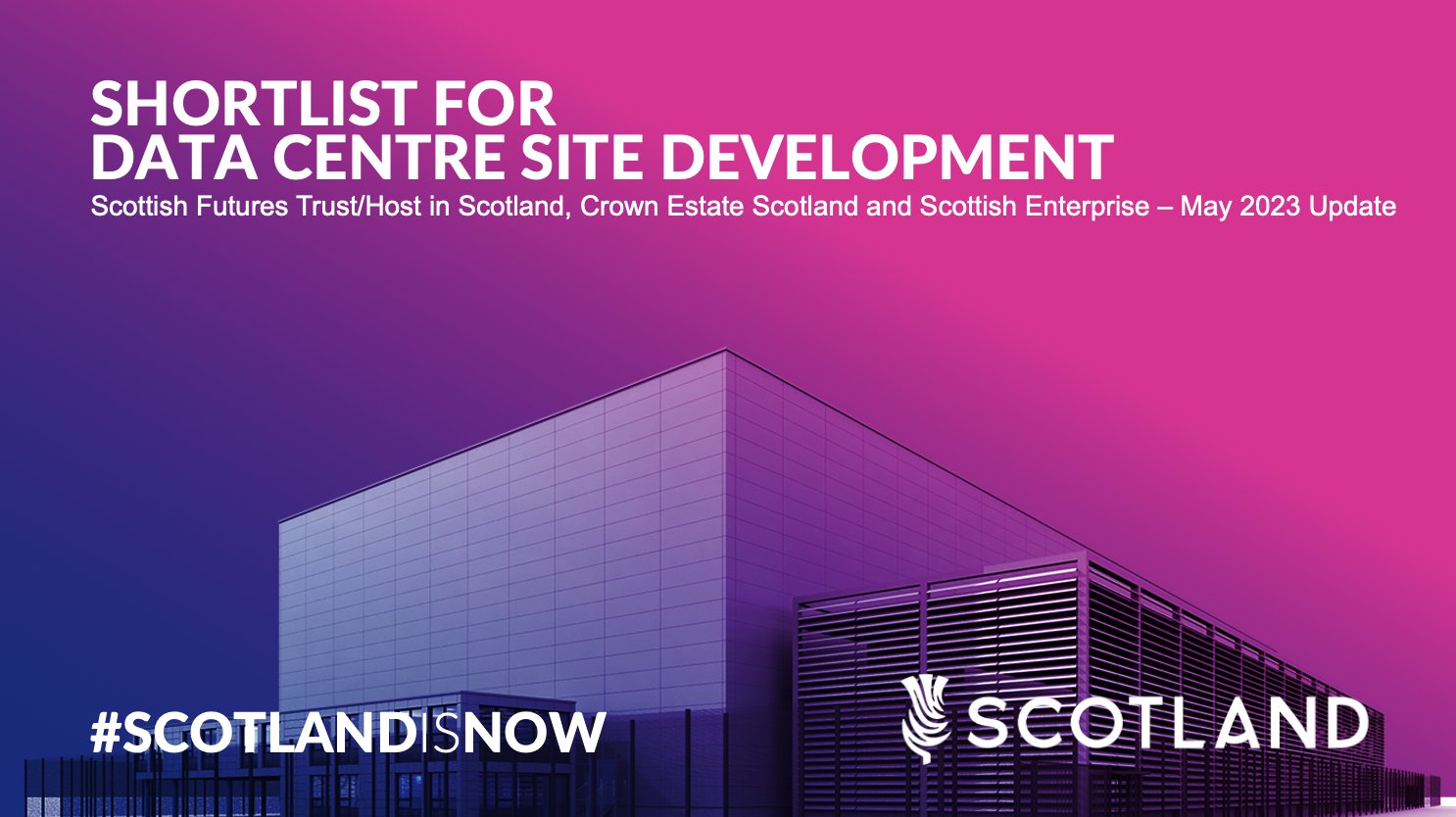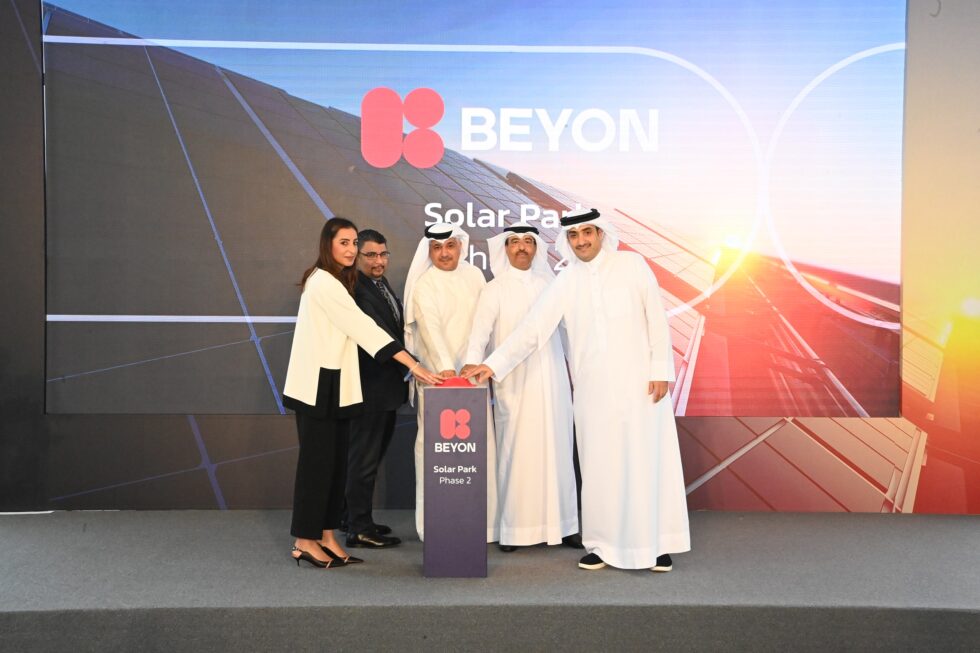Green IT
Energy Management
Green IT
Alibaba Cloud analyses carbon footprint for the Olympic Esports Week
Alibaba Cloud has announced that its AI-driven sustainability solution, Energy Expert, has been trialled to measure and analyse carbon emissions from temporary construction built to host the first Olympic Esports Week, generating data-driven insights on the choice of materials and equipment. The tool has been deployed through its partnership with the International Olympic Committee (IOC).The company deployed Energy Expert to measure and analyse the carbon emissions of the event’s temporary construction. A series of metrics including the impact of energy consumption, waste management, signage and decoration were assessed. This software-as-a-service tool was used by the local organising committee to compare the relative impacts of several types of materials and equipment.Energy Expert allows event organisers to identify the sources of the carbon emissions from venue construction and operation, quantify the carbon footprint generated by a venue and visualise a venue’s sustainability performance via an integrated dashboard and online reports.According to the solution, the carbon footprint of temporary construction for the Olympic Esports Week 2023 is estimated at 274 tons CO₂e, after replacing 60% of printed signage with digital alternatives which led to 14 tons CO₂e of CO₂ emission reductions, as well as reusing 50% of carpets after the event that would slash emissions further by 10 tons CO₂e.
“We are always looking for ways to reduce our impact on the environment, and we’re pleased to work with Alibaba Cloud to apply cutting-edge technologies to measure carbon emissions so we can continue to make a difference,” says Vincent Pereira, Head of Virtual Sport, IOC Sports Department.
“We have been supporting the IOC’s digital transformation of the Olympics since Tokyo 2020, and it has been an honour to be part of this latest, historic milestone for virtual sport. Sustainability is one of the priorities for our sports innovation roadmap. As the sports industry continues to evolve, we’re passionate about providing organisations with timely data, actionable insights and energy-saving recommendations that make positive and tangible impacts,” says Selina Yuan, President of International Business, Alibaba Cloud Intelligence.
The week marks the collaboration between the IOC and Alibaba on digital transformation and is Alibaba’s first large-scale international project to tackle carbon emissions within the esports industry.The esports industry has a growing environmental impact as the sport becomes more mainstream. Industry analysis estimates that in 2022 a single esports team could create as much as 100 tonnes of CO₂ emissions. Individual consumption is also growing as 40% of the global population now play video games, according to industry analyst firm, DFC Intelligence, meaning that there’s a significant impact to be addressed.
Isha Jain - 23 June 2023
Data Centres
Energy Management
Green IT
Aruba takes the next step towards data centre energy efficiency
Aruba has announced that it is the first Italian company to have received the declaration of conformity of the Data Centres of the Ponte San Pietro technology campus to the European Code of Conduct for Data Centre Energy Efficiency (CoC), following an audit conducted by a third-party verification body, Bureau Veritas.
The CoC for data centre energy efficiency was established by the European Commission in response to increasing energy consumption of data centres with the aim of informing and stimulating data centre operators to reduce this consumption in a cost-effective manner, without hampering the mission critical function of data centres. The focus is on how to improve energy demand within the data centre sector by raising awareness and recommending best practices in terms of energy efficiency.
The CoC declaration of verification represents a guarantee of compliance with the best practices of the code, developed by the European Joint Research Centre, and is divided into thematic areas, such as utilisation, management and planning, IT, cooling, power, building and monitoring, with the aim of concretely reducing energy consumption.
At the same time, it represents a competitive advantage for all customers, as it ensures compliance with one of the main requirements for data centres in the DNSH principle, the criterion that companies are required to observe in order to be eligible for NRP funding. According to this principle, companies that contribute through their economic activities to the protection of the ecosystem must not cause any significant harm to the environment.
In addition, this code of conduct contributes to the compliance with the requirements of the Climate Neutral Data Centre Pact framework, to which Aruba is a signatory, together with other European providers, with the aim of making data centres climate neutral by 2030.
Isha Jain - 21 June 2023
Green IT
News
Princeton Digital Group takes steps on digital decarbonisation
Princeton Digital Group (PDG) has released the second edition of its ESG report, ‘Towards Digital Decarbonization’, which details its efforts to drive sustainability across its business and markets. Underscoring its vision to be the leader in sustainability in the region, PDG announced a commitment to work towards achieving net zero for Scope 1 and Scope 2 emissions by 2030.
Most notably, PDG acted on its pledge to contribute to the fight against climate change by offsetting about 6% of its carbon footprint with the procurement of renewable energy from geothermal and biomass sources in the form of Renewable Energy Certificates (RECs). The company also entered several strategic partnerships with renewable energy providers across markets.
PDG recognises that procuring renewable energy is the most definitive route to digital decarbonisation and recently signed a 25-year renewable energy contract with Tata Power Renewable Energy Ltd to procure solar power generated by a captive project, for its MU1 Mumbai data centre.
“The unprecedented expansion of digital infrastructure provides a massive opportunity for the industry to prioritise sustainability. Our deep presence across Asia coupled with our position as a partner of choice for hyperscalers, provides us with a unique opportunity to lead the industry in driving digital decarbonisation,” says Rangu Salgame, Chairman, Chief Executive Officer and Co-Founder, Princeton Digital Group. “We also aim to set industry-leading standards for protecting the health and safety of PDG employees, contractors, visitors, and clients, and build a work culture of diversity, inclusion, and equal opportunity for our employees.”
Its environment strategy is driven by procurement of renewable energy, energy and resource efficiency, green design and construction and technology and innovation.
The company’s greenfield hyperscale projects are built with a design PUE between 1.2 – 1.4 leading to high energy efficiency. The company is also enabling technology solutions such as liquid immersion cooling in its data centres to optimise power consumption.
The report, built in reference to GRI standards, shares details on the company’s carbon footprint and other ESG metrics. It also sheds light on the company’s approach and action plan for all material topics.
Isha Jain - 19 June 2023
Data Centres
Green IT
Infrastructure Management
Report identifies new opportunities for data centres in Scotland
A new report commissioned by Host in Scotland has identified 20 best sites for green data centre development.
The Data Centre Site Selection report provides the market with recommendations on potential new data centres locations across Scotland, with the aim of attracting inward investment of major colocation facilities or hyperscale development.
Host in Scotland has commissioned consultancies, FarrPoint and TechRE, to review its original Site Selection report from 2021.
Its work identifies five new sites: Aberdeen ETZ, Queensferry One and Westfield Park in Fife, Millerhill in Midlothian and Whitecross Innovation Park, Falkirk. Each of them features a potential availability for renewable energy, bringing the list of potential sites across Scotland to 20.
The study follows up on the Scottish Government’s publication, Green Data centres and Digital Connectivity Vision and Action Plan, which positions Scotland as a zero-carbon, cost-competitive location.
Dr Andrew Muir, CEO at FarrPoint says, “With its expanded list of desirable sites, our updated report is likely to be of great interest to current data centre owners or operators in Scotland, as well as potential new entrants to the market, infrastructure providers and investors.
“The methodology and approach are consistent with how the data centre industry identifies sites for further detailed due diligence, so the report provides a reliable and useful starting point and guide to investigating data centre opportunities.”
Henry Sutton, Director at TechRE says, “Scotland’s climate and renewable energy capability makes it an ideal location for data centres. Our new report comes at an opportune time for the country, as data centres increasingly seek out access to large sources of sustainable energy whilst plans for renewable projects, particularly major windfarms off the coast of Scotland come to fruition.”
Isha Jain - 13 June 2023
Data Centres
Green IT
Time to end siloed thinking and tackle sustainability across data centres and IT
Serverfarm will issue a white paper calling for an end to the siloed thinking that is preventing real sustainability actions in IT and data centres.
“It is time for CIO, CTO and data centre leaders and stakeholders to address head on the ESG, decarbonisation and sustainability challenges we face today if we are to deliver true net zero data centres and IT,” says Arun Shenoy, CMO and SVP of Sales EMEA at Serverfarm.
The paper, ‘Data Center + IT Collaboration to Cut Carbon’ provides an 'applications to data centres' perspective for CIOs, CTOs, CSOs and data centre leaders by providing a call to action for greater co-operation.
It includes a number of checklists for IT and data centre engineers and offers a 'buildings to software’ perspective on digital sustainability.
The paper covers greener data strategies for physical infrastructure, including existing buildings, new builds versus modernisation, greening space, power and cooling, green software development and applications, server and processor architectures, cloud tools, along with measurement, monitoring, and management strategies.
“At every layer of the stack, there are sustainability gains to be made. Down at the processor level, CIOs prioritise performance per watt, whereas data centre engineers focus on the buildings and infrastructure. These data centres use thousands of megawatt hours per year, but are often underusing their power capacity,” says Arun.
Isha Jain - 7 June 2023
Data Centres
Energy Management
Green IT
First data centre in Bahrain to be fully powered by clean energy
Beyon’s Chairman, Shaikh Abdulla bin Khalifa Al Khalifa, has announced the completion of Phase 2 of the company’s Solar Park at a ceremony which recently took place in the presence of H.E. s Kamal Bin Ahmed Mohamed, President of Electricity and Water Authority; H.E. Mohamed bin Thamer Al Kaabi, Minister of Transportation and Telecommunications; H.E. Yasser bin Ibrahim Humaidan, Minister of Electricity and Water Affairs; H.E. Mrs. Noor Bint Ali Al Khulaif, Minister of Sustainable Development; and Mr Mohamed Almoayyed Director YK Almoayyed & Sons.
The event was held at the Royal Golf Club in Riffa, where members of Beyon’s board of directors, executive team and team members involved in the project were present on the occasion.
Beyon’s Chairman welcomed the distinguished guests and extended his appreciation for their attendance at the inauguration of Beyon Solar Park.
Speaking on the occasion, he said, “Beyon’s efforts towards sustainability and clean energy production continues, and we have made great progress since the launch of the first phase of the Solar Park in November 2021. Today we are glad to announce the completion of the second phase of the project.
“We are also very proud of an unprecedented achievement in the telecommunications and technology sector, as Beyon’s Data Centre became the first in Bahrain to rely entirely on clean energy generated from the company’s Solar Park, which is located in the Beyon Data Oasis.
“Our journey in the field of environmental sustainability continues in line with our commitment to Bahrain’s vision launched by His Royal Highness Prince, Salman bin Hamad Al Khalifa, Crown Prince and Prime Minister of the Kingdom of Bahrain, and announced as part of his address during the 26th United Nations Climate Change Conference 2021, held in Glasgow, Scotland, which reiterates the Kingdom’s commitment to achieve zero carbon neutrality by 2060. Thus, we have set clear plans to start implementing the third phase of this project, which will be located in Hamala. Upon completion of this phase, the total clean energy production of Beyon will be approximately 6GWh per year.
“On this occasion, I would like to extend my sincere thanks to the Ministries, concerned authorities and our partners for their invaluable support in helping us implement this project and contributing to its success,” Shaikh Abdulla concluded.
Beyon’s Solar Park Phase 1 and 2 will generate 3.6GWh of clean energy leading to a carbon footprint saving of over 2000 tonnes and a cost saving of BD105,000 annually.
Isha Jain - 5 June 2023
Cooling
Data Centres
Green IT
Infrastructure Management
Swindon data centre goes carbon neutral in sustainability push
A data centre in Swindon, Carbon-Z, has become one of the first in the UK to be fully carbon neutral, following an overhaul of its site and work practices. This includes the submersion of all hardware components in cooling liquid and sourcing electricity from green energy providers. Plans are also in place for installing solar panels on the site’s roof.
The site was previously known as SilverEdge and is rebranding itself to reflect the change of direction in how it operates and the services it provides to clients. It now hopes to inspire a wider shift towards sustainability within the data centre industry, which accounts for more greenhouse gas emissions annually than commercial flights.
Jon Clark, Commercial and Operations Director at Carbon-Z, comments, “As the UK and the world move towards achieving net zero emissions by 2050, our industry is responsible for making data centres greener and more efficient. At Carbon-Z, we continually look for new ways to improve our sustainability, with the goal being to get our data centres to carbon neutral, then carbon zero and then carbon negative. We believe this is possible and hope to see a wider movement among our peers in the same direction over the coming years.”
Playing it cool
The growing intensity of computing power, as well as high performance demands, has resulted in rapidly rising temperatures within data centres and a negative cycle of energy usage. More computing means more power, more power means more heat, more heat demands more cooling, and traditional air-cooling systems consume massive amounts of power, which in turns contributes to the heating up of sites.
To get around this, Carbon-Z operates using liquid immersion cooling, a technology which involves the submersion of hardware components in dielectric liquid (which does not conduct electricity) and conveys heat away from the heat source. This greatly reduces the need for cooling infrastructure and costs less than traditional air cooling. The smaller amount of energy that is now needed to power the Swindon site can now be sourced through Carbon-Z’s Green Energy Sourcing.
While its clear that immersion cooling is quickly catching on - it is predicted to grow from $243 million this year to $700 million by 2026 - the great majority of the UK’s more than 600 data centres are not making use of it, and continue to operate in a way which is highly energy intensive and carbon emitting.
Riding the wave
As part of its rebrand, Carbon-Z has also updated the kinds of services it offers to customers to make sure that they are financially, as well as environmentally, sustainable. Its new service, Ocean Cloud, has been designed with this in mind, providing customers dedicated servers and a flat-fee approach to financing.
Having a dedicated server within a data centre means that spikes in demand from other tenants has no effect at all on yours, avoiding the ‘noisy neighbour’ problem associated with the multi-tenant model favoured by many large operators. This makes the performance of the server more reliable and energy efficient.
Ocean Cloud also solves one of the other major problems with other cloud services - overspend - through its flat-fee approach. Customers are charged a fixed fee that covers the dedicated server and associated storage, as well as hosting and remote support of the hardware infrastructure to reduce maintenance overheads.
Jon comments, “We are very proud of Ocean Cloud, as it allows us to offer clients a service that is not only better for the ocean, the planet and for our local communities than other hosted services, but also brings clear operational and cost-related benefits. Striking this balance is crucial to ensure customers are on board with the transition to more sustainable data centre operations, especially at times like these when many companies are feeling the financial pinch off the back of rising inflation.”
Beatrice - 28 October 2022
Data Centres
Green IT
Infrastructure Management
How smart innovation is helping data centres hit net zero
By Simon Prichard, Product Strategy Manager, Mitsubishi Electric.
As data centres become an increasingly critical element of the UK’s digital infrastructure, the question continues to circle about how we can make them as energy efficient as possible.
This is a vital point that needs to be addressed. After all, data centres are a huge source of carbon emissions, collectively pumping out the equivalent CO2 of a mid-sized country every year. In order to reach the UK’s carbon reduction goals, the emissions caused by the whole data centre industry must be significantly cut over the next few (vital) years.
Of course, the environmental impact of data centres is already being closely considered and green construction is coming to the forefront of design. In fact, many centre operators have pledged to reach zero-carbon emissions by 2030. At an industry level, the Climate Neutral Data Centre Pact has committed to the fact that data centre electricity demand will be matched by 75% renewable energy or hourly carbon-free energy by December 31, 2025, and 100% by December 31, 2030.
As part of this push, one area that must be focused on is investing in sustainable and efficient cooling solutions - as cooling is a big energy user in data centres - as well as reducing the level of embodied carbon in data centres and using analytics and smart insights to optimise how power is used.
Making cooling sustainable
Data centres and IT cooling rooms are unique environments, where a constant temperature must be maintained year-round. The spaces are built to be resilient with back-up generators and cooling equipment designed to work reliably 24 hours a day. This equipment is crucial, as it is there to stop computers from overheating and shutting down.
For example, when humidity levels vary, reliable, close control cooling must kick in and keep equipment at the right temperate to work effectively. And it isn’t just the performance of cooling equipment at the start of its lifecycle that needs to be taken into account, a chiller also needs to continue delivering that level of performance every day through to year 10 and beyond.
This constant cooling requires a lot of energy, so the challenge is to cool spaces reliably while making sure it happens in the most energy efficient, sustainable way possible.
Advanced controls can help here, as well as the use of planned, preventative maintenance, which can keep products working as efficiently as possible. Chiller diagnostic checks, run-performance evaluations in combination with inverter technology, all promote optimised performance and reduce wear and tear - which should in turn keep energy being used most effectively.
Harnessing analytics and smart insights
As technology continues to evolve, it’s becoming possible to harness real-time data visualisation and smart insights to optimise the use of cooling equipment. By giving organisations this kind of detailed information into the operations of their data centres, it’s possible to reduce energy use in certain areas, and identify systems that could be running more efficiently.
This includes mapping all of the systems that a data centre has, locating them, tagging them and then converting ‘invisible’ raw data into actionable intelligence to make things work better and more efficiently.
This is particularly handy when data centres may be using multiple systems from different vendors - which often can’t talk to one another or require the use of numerous dashboards. By being able to see the data all together, it’s possible to better address many challenges - including performance management, accuracy of billing, energy costs and system capacity - and importantly, make necessary changes to keep systems operating in the most energy efficient way possible.
This innovation can support everyone involved in data centres - including manufacturing companies, building owners, facility managers and even government organisations - to reduce the cost of deploying and maintaining IT cooling equipment, and bring down both the carbon footprint and the cost of running data centres.
Reusing, not wasting, energy
When it comes to improving data centre sustainability, there is also a big opportunity to reuse energy, rather than waste it. Heat pumps are the key here, as they have the potential to take recovered heat which is generated in data centres - which would otherwise be released out into the environment - and upgrade it to be distributed and heat local spaces, potentially via a heat network.
The transfer of ‘waste’ heat into something useful will help to reduce the amount of energy needed to generate new heat across the wider network.
Tackling embodied carbon
As well as cutting the energy created by cooling and heating within a data centre, it’s also important to consider the whole process of building, running, maintaining - and even demolishing - a data centre, and the carbon footprint that each stage has.
Fundamentally, data centres are buildings, which means that they contain a lot of ‘embodied’ carbon too. This includes the overall CO2 emissions in the metal, bricks and mortar used in the construction of the building, for example.
By identifying how design, construction and management decisions affect a data centre’s carbon footprint and how to minimise it, it is possible to bring down the overall environmental impact of a data centre.
Data centres ostensibly play a very important role in keeping our IT systems running, but in doing so they are inevitably energy intensive spaces. Through more sophisticated analytics and monitoring, as well as taking into consideration how energy can be reused and how embodied carbon can be reduced across every stage of building and running a data centre, it is possible to keep carbon emissions, energy use and running cost down. On the road to reaching net-zero carbon emission by 2050, and the even more ambitious goal of achieving a zero-carbon data centre by 2030, these factors will be key.
www.mitsubishielectric.com
Beatrice - 23 September 2022
Data Centres
Green IT
Infrastructure Management
Green decentralised energy solutions could help bridge expansion gap
As recent reports show rapidly escalating data centre supply in the FLAP markets, construction site stakeholders need to identify energy solutions to keep powering this rapid expansion, says Aggreko.
According to a recent CBRE report, new supply surged in 2021, with 397MW coming online across the FLAP markets. With this momentum expected to continue into 2022, Aggreko is encouraging data centre owners and operators to get ahead of the curve when it comes to energy scarcity and powering increasing amounts of space.
“Though the European market’s continued boom is undoubtedly good news, certain worrying trends can be identified by delving through the data behind this continued growth,” says Billy Durie, Global Head for Data Centres at Aggreko. “Nowhere is this more apparent than in the fact that the FLAP markets have experienced its two largest quarters for take-up in the second half of the year, with 105MW in Q3 and 96MW in Q4 respectively. Taking this into account, the question must be asked- how is all of this going to be powered?
“Such scale, coupled with the fact the CBRE has anticipated higher costs caused by energy price rises, will pose challenges for those building new facilities to service this growth. Namely, data centre stakeholders may find themselves unable to power expanded halls or increased take-up in existing premises due to grid constraints.”
The effects of grid strain can be clearly seen in Amsterdam, where a moratorium has been in place since July 2019 on data centre construction in both the city and nearby Haarlemmermeer’s municipalities. Though not as extreme, other areas are experiencing similar issues. For example, the CBRE has identified government-imposed restrictions on build activity as a key challenge for the rapidly expanding Frankfurt market.
Such limitations highlight the role decentralised energy solutions could play in meeting data centre construction demand. Specifically, by using generator technology as a bridging solution during both the project and when facilities come online, power provision can be maintained while grid capacity is increased for these new or expanded facilities.
Billy says: “Looked upon from the outside, it could be argued that the European data centre sector is experiencing what might be regarded as an enviable problem. Yet this remains a pressing concern, and one that must be addressed if the FLAP markets’ upward trajectory is to continue unabated. The provision of green distributed energy equipment on a hired basis is one such way to bridge this gap between ever-growing data centre demand and increasingly unreliable and constrained grid infrastructure.
“Whether through the use of alternative fuels such as HVO, alongside Stage V generators for larger sites or hybrid battery systems for smaller loads, the technology is already there to sustainably assist this transition. Considering these facilities are increasingly situated in built-up areas subject to emissions controls, this is also a vital concern.”
Beatrice - 16 March 2022
Data Centres
Green IT
Decarbonising key to ensuring data centre sector sustainability
Pessimism arising from a recent survey of data centre owners and operators about the sector’s sustainability reaffirms the need for green practice at all phases of a facility’s lifetime, according to Aggreko.
The Uptime Institute’s recent questioning of 400 global stakeholders over the data centre sector’s sustainability has shown that only 38% of respondents believe the industry’s environmental commitments had proven effective. Similarly, 45% of respondents replied that they had led to few or no reductions in energy use, water use and greenhouse gas emissions.
Faced with these latest industry insights, Billy Durie, Global Sector Head for Data Centres at Aggreko, is suggesting that facility construction is also a vital part of reducing the sector’s environmental impact. According to Billy, paying further consideration to this aspect of a facility’s lifetime is key to further reducing carbon emissions during operation.
“The latest Uptime Institute report comes at a time when the industry is under more pressure than ever to decarbonise,” says Billy. “However, despite the right actions being taken insofar as environmental commitments are concerned, the analysis shows more can be done.
“As the data centre market continues to boom, greener IT infrastructure is required to help create a better future. To achieve this, the industry must go beyond day-to-day operations and consider the impact of construction, which can be responsible for a large proportion of any facility’s overall carbon footprint.”
The Institute’s report goes on to say that European respondents felt more can be done to help data centres reduce their environmental impact. According to Billy, industry suppliers in this market will be crucial in helping this sentiment become a reality, especially with the provision of more efficient equipment and greener fuels.
He concludes: “The fact of the matter is that the data centre sector alone cannot achieve the decarbonisation required – the supply chain must take similar action. Aggreko, for instance, has committed to investing c.£30m in more environmentally-friendly temporary solutions before the end of the year to achieve this aim, as part of our Greener Upgrades initiative.
“Similarly, as far as we are aware we are the only equipment hire company to have carried out independent, verified testing across multiple generator nodes on the use of hydro treated vegetable oil (HVO) as a drop-in fuel, monitoring emissions and impact on efficiency. We are also committed to cutting diesel use for our customers and reducing local air quality emissions by 50% within 10 years. As all companies work towards carbon neutrality by 2050, actions such as these will be key to turning around industry sentiment from the negativity seen in this latest Uptime Institute report.”
To download Aggreko’s new Greener Upgrades guide, click here.
Beatrice - 4 March 2022

Head office & Accounts:
Suite 14, 6-8 Revenge Road, Lordswood
Kent ME5 8UD
T: +44 (0)1634 673163
F: +44 (0)1634 673173









